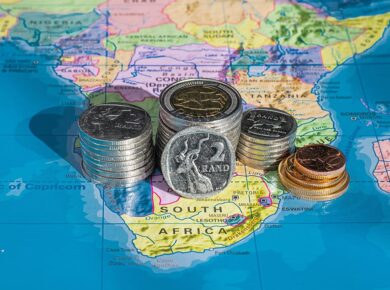UAE Economy Set to Expand: S&P Forecasts 3% Growth in 2023, 4% in 2024

The United Arab Emirates’ economy is poised for growth, with S&P projecting a 3% expansion in 2023, followed by a 4% growth rate in 2024. The driving force behind this economic upturn is expected to be the non-oil sector, which will benefit from robust growth in tourism, government initiatives, and technological advancements, according to analysts at S&P.
In their statements to the Emirates News Agency (WAM), S&P analysts highlighted the comprehensive economic and social initiatives undertaken by the UAE government in recent years. These initiatives have been strategically designed to pave the way for sustained and long-term economic expansion.
S&P analysts anticipate continued growth in the UAE’s thriving tourism sector. The nation’s ability to host major international events is anticipated to play a pivotal role in achieving the UAE’s ambitious objective of attracting 40 million visitors by 2030. Concurrently, there are plans to expand the number of hotel rooms to 250,000 during the same period.
The UAE banking sector is expected to remain robust, with profitability projected to surpass pre-pandemic levels, driven by rising interest rates. Additionally, the Dubai real estate sector is poised to become more flexible, with housing prices stabilizing due to strong demand.
Trevor Cullinan, a sovereign ratings analyst at S&P, stated that the UAE economy is poised to grow by 3% in 2023, primarily propelled by the non-oil sector. He further noted that the economy is expected to expand by 4% in 2024, with contributions from both the oil and non-oil sectors. Cullinan outlined key drivers of the country’s economic growth, including sectors such as oil and gas, wholesale trade, industry, real estate, construction, financial services, and tourism.
Cullinan expects the non-oil economy to benefit from an influx of expatriates and tourists, as well as positive sentiment from investors, consumers, and the private sector. This aligns with the “We Are the Emirates 2031” vision, aimed at boosting trade volume and the tourism sector’s contribution to GDP through cooperation between government agencies, institutions, and the private sector.
Cullinan emphasized the UAE government’s recent initiatives, which include allowing 100% direct foreign ownership in over 1,000 commercial and industrial activities, introducing an insolvency law to assist individuals facing financial difficulties, enhancing the ease of doing business, and introducing various new visas to attract skilled workers and tourists.
He highlighted the UAE’s efforts to develop a yield curve denominated in the UAE dirham through the issuance of treasury bonds and local currency-denominated instruments. This initiative is expected to bolster local capital markets and broaden financing sources for UAE companies and banks.
The implementation of a corporate tax system in the UAE was also noted as a move to diversify government revenues away from the oil sector while modernizing the business environment.
Tatiana Lysenko, Lead Economist for Emerging Markets at S&P, emphasized that the expansion of the UAE’s tourism sector would be a key driver of economic growth. She pointed out that Dubai successfully attracted 14.7 million international visitors in 2022, doubling the figures from 2021. This suggests a potential return to peak visitor numbers in 2019 during 2023. Abu Dhabi also experienced growth, attracting 4.1 million hotel guests in 2022, a 24% increase from 2021.
Lysenko expects the UAE’s tourism sector to continue growing, supported by the regular hosting of prominent events. This growth is aligned with the UAE’s goal of attracting 40 million visitors by 2030, accompanied by significant hotel room expansion.
Furthermore, Lysenko anticipates that emirates like Abu Dhabi and Dubai will remain at the forefront of attracting businesses and tourists to the country. Other emirates, such as Ras Al Khaimah and Sharjah, are actively promoting their tourism sectors, contributing to the diversification of tourism offerings in the UAE.
Regarding the real estate sector in Dubai, Lysenko predicts increased flexibility and stable housing prices, driven by strong demand. She also highlights the rising number of new commercial licenses, indicating Dubai’s attractiveness to businesses.
Mohamed Damak, senior director and global head of Islamic finance at S&P, reaffirmed the strength of the UAE banking sector. He expects profitability to improve and exceed pre-pandemic levels, driven by rising interest rates and technological advancements. Additionally, the capitalization of the UAE banking system is anticipated to remain robust, supported by strong internal capital generation, favorable financing conditions, liquidity, and a strong net external assets position, safeguarding it against global liquidity pressures and rising costs.






Hfwfyb
ivermectin 6 mg for people – order candesartan sale tegretol 200mg sale
December 31, 2024Ibhjgq
order accutane 20mg for sale – linezolid 600 mg price purchase zyvox generic
January 13, 2025Wzcggb
amoxicillin tablets – order combivent for sale combivent pill
January 14, 2025Aknriu
buy azithromycin cheap – azithromycin 500mg sale bystolic online order
January 27, 2025Dpxxvm
buy prednisolone medication – prometrium 200mg sale progesterone online buy
January 30, 2025Lclwhw
order gabapentin 100mg pills – itraconazole order itraconazole 100mg over the counter
February 7, 2025Fxmigw
furosemide 40mg price – buy lasix 40mg for sale betamethasone price
February 8, 2025Fxttqi
purchase monodox – buy glipizide 5mg for sale generic glucotrol 5mg
February 12, 2025Lhcmdk
clavulanate price – buy duloxetine 20mg without prescription duloxetine cost
February 14, 2025Jhuvun
brand clavulanate – augmentin 375mg over the counter buy cymbalta generic
February 21, 2025Yybnec
buy rybelsus 14 mg pill – order semaglutide 14mg generic order periactin 4mg generic
February 23, 2025Esyjbf
buy tizanidine medication – buy plaquenil 200mg for sale buy hydrochlorothiazide 25mg without prescription
February 26, 2025Tdupxu
cialis brand – 50mg viagra order sildenafil 50mg
March 3, 2025Rasoaq
sildenafil 50mg price – buy cialis 5mg pills cialis for sale
March 3, 2025Rcwqxa
buy generic cenforce – cenforce cost buy glycomet 500mg sale
March 10, 2025Towzaa
buy generic lipitor – zestril 10mg usa order zestril generic
March 13, 2025Uqugdn
order prilosec for sale – order atenolol 100mg buy generic tenormin for sale
March 20, 2025Uqfnem
buy medrol sale – methylprednisolone ca brand triamcinolone 4mg
March 25, 2025Tijfob
buy clarinex without a prescription – buy cheap dapoxetine priligy 60mg for sale
March 27, 2025Ixejaj
generic cytotec 200mcg – xenical 120mg tablet diltiazem 180mg drug
March 29, 2025Qwjsxu
zovirax 800mg for sale – acyclovir pills buy crestor 20mg generic
April 4, 2025Qjygcz
brand domperidone – sumycin 500mg generic where can i buy cyclobenzaprine
April 6, 2025